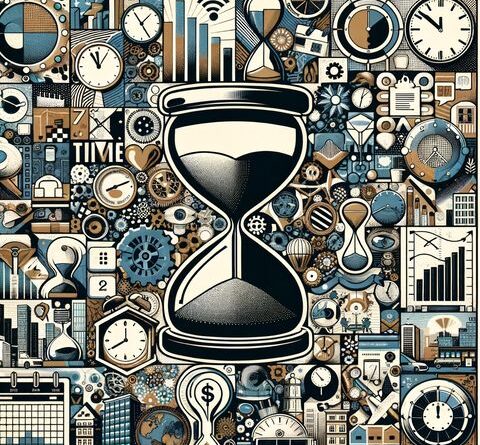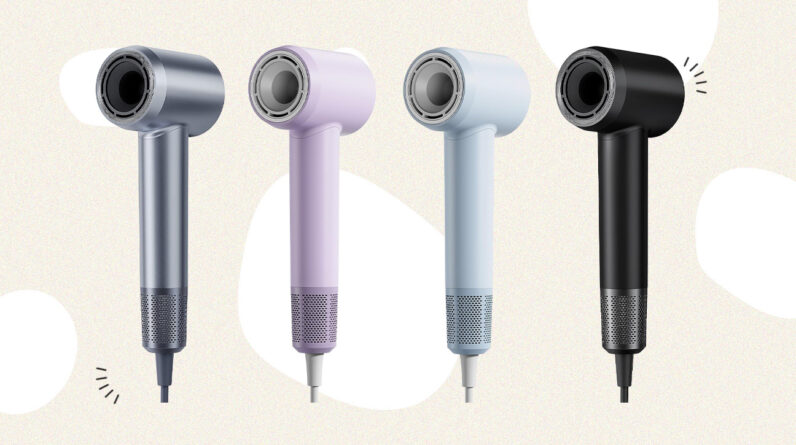
Are you constantly juggling tasks and feeling like there aren’t enough hours in the day? You’re not alone.
Many people struggle to find balance in their busy lives. The good news is that there are simple productivity tips that can help you regain control and make the most of your time. Imagine having more time for the things you love, while still meeting deadlines and responsibilities.
You’ll discover practical strategies that can transform your daily routine. These tips are designed to fit seamlessly into your life, giving you the power to boost your efficiency without added stress. Keep reading, because the secrets to a more productive life are just a scroll away.

Credit: www.jessicamassey.com
Prioritizing Tasks
Organize tasks by importance to boost productivity. Focus on urgent tasks first to reduce stress. Break projects into smaller, manageable steps to stay on track.
Prioritizing tasks can be a game-changer for busy people trying to manage their workload effectively. When your to-do list seems endless, deciding what to tackle first can be overwhelming. By focusing on what truly matters, you can enhance your productivity and reduce stress.Identifying Critical Tasks
Start by listing everything you need to do. This might seem daunting, but it’s essential to have a clear picture. Once you have your list, ask yourself which tasks will have the most significant impact on your goals. Focus on tasks that align with your long-term objectives. If a task doesn’t contribute to your progress, consider moving it down your priority list. A personal tip: I once spent hours on tasks that felt urgent but weren’t important. Shifting my focus to impactful tasks transformed my productivity. Are you falling into the same trap?Using The Eisenhower Box
The Eisenhower Box is a simple tool to help you prioritize. It divides tasks into four categories: 1. Urgent and Important: Do these first. They are your top priorities. 2. Important but Not Urgent: Schedule these to ensure they’re completed. 3. Urgent but Not Important: Delegate if possible. They can be distractions. 4. Neither Urgent nor Important: Consider eliminating these tasks. Create a table on a piece of paper or use an app to visualize your tasks:| Urgent | Not Urgent |
|---|---|
| Important | Important |
| Not Important | Not Important |
Time Management Techniques
Managing time efficiently can be challenging for busy individuals. Yet, it’s crucial for maintaining productivity. Implementing effective time management techniques can make a significant difference. They help streamline tasks, reduce stress, and enhance focus. Let’s explore some practical strategies to optimize your day.
Pomodoro Technique
The Pomodoro Technique is simple yet effective. It involves breaking work into intervals. Typically, 25 minutes of focused work followed by a 5-minute break. This method helps maintain concentration and prevents burnout. After four intervals, take a longer break. This cycle enhances productivity by keeping the mind fresh.
Time Blocking
Time Blocking is a strategic approach to managing your schedule. It involves assigning specific time slots to different activities. This technique ensures dedicated time for each task. It reduces distractions and improves focus. By visualizing your day, you gain better control over your schedule. This method helps in prioritizing tasks and achieving goals efficiently.
Effective Delegation
Effective delegation is a key skill for busy individuals seeking productivity. Knowing what tasks to delegate can save time and boost efficiency. Delegation allows you to focus on high-priority tasks that require your expertise. It also empowers your team, making them feel valued and trusted.
Choosing The Right Tasks To Delegate
Not every task should be delegated. Identify repetitive or less critical tasks that don’t need your personal touch. Routine tasks like data entry or scheduling are perfect candidates. Consider tasks that match your team’s strengths and skills. Delegating these tasks can enhance team performance and reduce your workload.
Communicating Clearly
Clear communication is vital for successful delegation. Explain the task requirements and expectations thoroughly. Provide any necessary resources or guidelines for the task. Use simple language to avoid misunderstandings. Ensure your team knows the importance of the task and its impact on overall goals.
Encourage questions to clarify any doubts. Being approachable fosters a positive environment for delegation. Regular check-ins can help monitor progress and provide support.

Credit: www.themuse.com
Minimizing Distractions
Busy people can boost productivity by minimizing distractions. Focus on key tasks to stay efficient. Turn off notifications to maintain concentration.
Minimizing distractions is key to boosting productivity, especially for busy people. The modern world is full of interruptions. These interruptions can derail your focus. To stay productive, it’s important to limit these disruptions. Here, we explore effective ways to minimize distractions.Digital Minimalism
Many people face constant digital interruptions. Notifications, emails, and social media alerts distract us. Digital minimalism involves reducing these digital distractions. Turn off unnecessary notifications on your devices. Set specific times to check emails and messages. Use apps that block distracting websites. This helps maintain focus on important tasks.Creating A Focused Workspace
A cluttered workspace can lead to a cluttered mind. Keep your workspace tidy and organized. Remove items that do not serve your current task. Ensure that your desk is free from distractions. Personalize your space with calming elements. A clean and organized space promotes better concentration. These strategies can significantly increase productivity. Implement them to create a more focused work environment.Harnessing Technology
Busy people often struggle to find time for everything. Technology can help you. It boosts productivity and saves time. You can accomplish tasks faster. Tech tools streamline processes. They reduce manual effort. Explore how tech can aid productivity.
Productivity Apps
Productivity apps organize tasks efficiently. They track deadlines and appointments. Apps like Todoist and Evernote help manage lists. You can set reminders and alarms. These apps synchronize across devices. You never miss an important task. Simple designs make them user-friendly.
Automation Tools
Automation tools simplify repetitive tasks. They save hours of work. Use tools like Zapier or IFTTT. They connect apps and create workflows. Automate email responses and social media posts. This reduces manual input. Your focus shifts to important tasks. Automation enhances efficiency and frees time.
Mindfulness And Relaxation
Boost productivity with mindfulness and relaxation. Busy schedules can lead to stress. Practicing mindfulness helps clear the mind and improve focus. Simple relaxation techniques reduce anxiety, making tasks easier to tackle.
In the hustle and bustle of modern life, busy people often struggle to find balance. Mindfulness and relaxation can be the keys to unlocking productivity and maintaining mental health. By integrating these practices into your daily routine, you can work smarter, not harder. Breaks, breathing exercises, and reflection are not just for monks. They’re essential for anyone looking to maximize output without burning out. ###Incorporating Short Breaks
Taking short breaks can significantly boost your productivity. Studies show that stepping away from your tasks allows your brain to recharge. Consider the Pomodoro Technique. Work for 25 minutes, then take a 5-minute break. This method helps maintain focus and prevents fatigue. During breaks, engage in activities that relax and energize you. Stretch your legs, grab a coffee, or chat with a colleague. These short pauses can revitalize your mind and body. ###Practicing Deep Breathing
Deep breathing is a powerful tool for relaxation. It calms your mind and lowers stress levels, making you more productive. Try this: inhale deeply through your nose for four seconds. Hold your breath for four seconds, then exhale slowly through your mouth for another four seconds. Repeat this cycle a few times. Feel the difference? Your heart rate slows down, and your focus sharpens. Deep breathing can be done anywhere—at your desk, during a commute, or even while waiting in line. Experiment with different breathing techniques. Find what works best for you and incorporate it into your daily routine. Are you ready to embrace mindfulness and relaxation to enhance your productivity? Small changes can lead to significant improvements.Setting Realistic Goals
Setting realistic goals is key for busy people aiming for productivity. Goals guide you to focus on what truly matters. They help in managing time efficiently. Without realistic goals, one might feel overwhelmed. This can lead to stress and burnout. Goals that are clear and achievable keep you on track. They provide a sense of accomplishment and motivation.
Smart Goals Framework
The SMART goals framework is a reliable method for setting goals. It stands for Specific, Measurable, Achievable, Relevant, and Time-bound. Start by being specific about what you want to achieve. Vague goals can lead to confusion. Make sure your goal is measurable. This means you can track your progress. Achievable goals are realistic and within reach. They should challenge you but not be impossible. Relevance ensures your goal aligns with your values and needs. Lastly, set a time frame to achieve your goal. This adds urgency and helps with prioritization.
Regular Review And Adjustment
Regularly reviewing your goals helps maintain focus. It ensures you stay on the right path. Set aside time each week to check your progress. Are you moving towards your goal? If not, find out why. Adjust your goals if necessary. Life is unpredictable, and priorities can change. Flexibility in goal-setting is essential. This keeps your goals aligned with your current situation. Regular adjustments prevent you from feeling stuck. They help in maintaining motivation and drive.

Credit: www.linkedin.com
Building A Routine
Creating a routine boosts productivity for busy individuals. It helps manage time and tasks effectively. Consistent habits lead to better focus and less stress.
Building a routine is like crafting a personalized blueprint for your day. It helps you manage time effectively, reduces stress, and boosts productivity. Establishing a routine doesn’t mean rigid schedules; it means finding a rhythm that suits your lifestyle. By setting consistent habits, you’ll find more time to focus on what truly matters. Below, let’s explore some practical tips for creating a routine that works for you.Morning Rituals
Starting your day with intention can set the tone for everything that follows. Consider waking up 30 minutes earlier to create some personal time. Use this period for activities that energize and motivate you. A few deep breaths, a stretch, or a quick walk can do wonders. What if you spent this time reflecting on your goals or practicing gratitude? Make breakfast a mindful moment; savor your coffee or tea without distractions. These small rituals can transform your morning into a powerful kickoff for the day.Evening Wind-down
A calming evening routine prepares your mind for restful sleep. Try ending your day with a brief review of accomplishments; it instills a sense of closure. Consider journaling or reading; these activities help you unwind. Limit screen time an hour before bed to prevent overstimulation. I found that sipping herbal tea or practicing gentle yoga eases tension. Could a warm bath or quiet meditation become your favorite evening ritual? These practices signal your body to relax, ensuring you wake refreshed and ready for the next day. By integrating these thoughtful routines, you can create a balanced day that maximizes productivity without compromising your well-being. What’s your favorite part of the day to establish a routine?Frequently Asked Questions
What Is The 1 3 5 Rule For Productivity?
The 1 3 5 rule boosts productivity by prioritizing tasks. Focus on 1 big task, 3 medium tasks, and 5 small tasks daily. This structure helps manage workload efficiently and maintains focus, ensuring important tasks are completed without feeling overwhelmed.
It simplifies decision-making and enhances time management.
What Is The 333 Rule For Productivity?
The 333 rule for productivity involves focusing on three tasks for three hours with three breaks. This method helps maintain attention and boosts efficiency by breaking work into manageable segments. It encourages balance between work and rest, improving overall productivity and reducing burnout.
How Do I Go From Busy To Productive?
Prioritize tasks using a to-do list. Focus on high-impact activities. Set deadlines and avoid multitasking. Take regular breaks. Review and adjust your strategy regularly.
How To Become 10x More Productive?
Focus on prioritizing tasks, set clear goals, and eliminate distractions. Implement time management techniques like the Pomodoro Technique. Use productivity tools to organize and track progress. Maintain a healthy work-life balance with regular breaks. Continuous learning and adapting strategies enhance productivity.
Conclusion
Boosting productivity doesn’t need to be complex. Simple changes can help. Prioritize tasks and focus on one thing at a time. Use tools like planners or apps to organize your day. Break tasks into small steps. This makes them less overwhelming.
Set clear goals for better direction. Remember to take short breaks to refresh your mind. Stay consistent with these habits. Over time, they become second nature. Everyone can find what works best for them. Small steps lead to big improvements.
Keep trying, and you will see progress.

